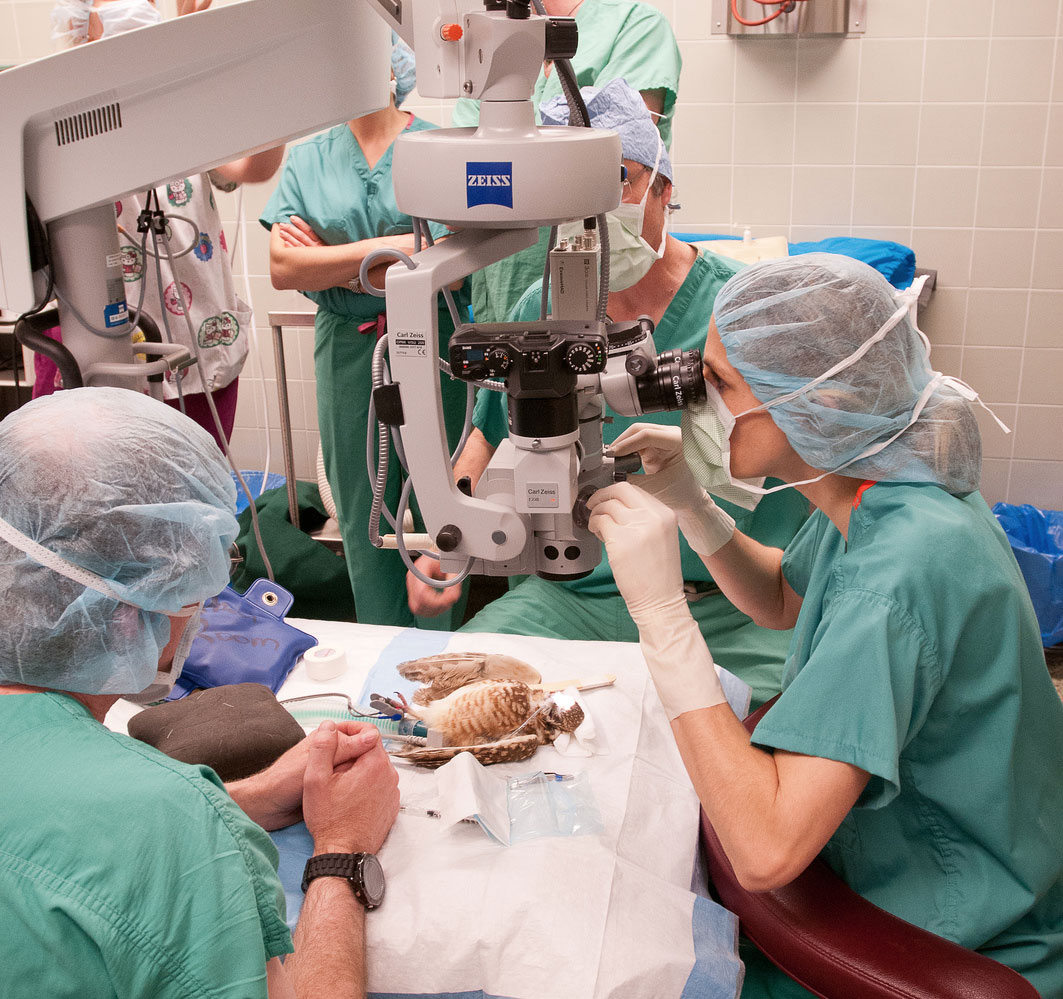Here's what you should do if you find a sick or injured raptor
An injured raptor requires IMMEDIATE specialized care. Any delay reduces the bird's chance for recovery. DO NOT attempt to rehabilitate the bird on your own; even giving food or water to an injured or emaciated bird can lead to its death.
-
Is it a raptor?
- Raptors include hawks, eagles, falcons, vultures, owls, and their kin.
- Is it injured?
- Observe the bird and assess the situation. Is the bird actually injured? Or is it engaging in normal raptor behavior? For example, a raptor might be on the ground and not flying when approached by humans because it has captured a large prey animal in its talons. A fledgling might be on the ground as part of its normal developmental process.
See below for a list of signs that help distinguish a sick or injured raptor from a healthy raptor. - What are the signs of a sick or injured raptor?
- A sick or emaciated bird may act slow and lethargic and allow you to approach it or may be mired in mud or water. It may not be standing and instead may lie on its belly or side. It may have balance problems and may stagger and stumble as it tries to walk.
Some adult birds will have more obvious injuries such as broken wings that drag and cannot fold back onto the body or be used for flight, or visible blood on the body.
Other injuries may be less immediately obvious but will prevent the bird from flying away as you approach. - Is this baby raptor orphaned or not?
-
How can you tell if a raptor "baby" is in danger or should be left alone?
A baby raptor may be in danger if you observe the following:
- Brought to you by a cat or a dog
- Bleeding
- Broken limb
- Featherless or nearly featherless bird (nestling) on the ground
- Shivering
- Evidence of a dead parent nearbyIf the found bird meets these conditions, safely capture and place the bird into a warm box as described below.
More information about raptor orphans can be found here.
- Dos and Dont's
-
Even a seriously injured or seemingly incapacitated raptor can be potentially dangerous. Even if you are trying to help the bird, it will be frightened and may perceive you as a threat. Raptors can be quite unpredictable. Be particularly wary of their beak and talons that can SERIOUSLY INJURE you! The less contact the bird has with people, the more likely it is to survive since additional stress may be deadly to an already injured bird.
It is important that you make a record of the time, date and location of capture because, whenever possible, the bird will be released in its original range.DO NOT attempt to care for the raptor yourself. It may result in injury to you and/or the bird. CRC is equipped to deal with the raptor's medical, housing, and nutritional needs. We are ready to do so immediately upon its arrival.
NEVER feed an injured raptor. Raptors, especially “baby” birds, have specific dietary needs and even the best meat available to you may be inappropriate or harmful to them. Most injured raptors are suffering from dehydration and/or emaciation and sudden food or water may kill them.
-
How to Handle an Injured Raptor
-
- Wear thick leather gloves (such as welding gloves or heavy gardening gloves) at all times to avoid injury from the bird's sharp talons and beak.
- Use a towel, blanket, or jacket to temporarily cover the bird. This will help calm the bird and allow you to more safely lift and carry it.
- Calmly approach the bird holding the towel in front of you.
- Carefully place the towel over the bird. Through the towel, gently fold the bird’s wings into its body with your gloved hands.
- Slide your gloved hands underneath the bird and grab one leg in each hand. Your arms should bracket the wings, holding them into the bird’s body.
- Once you are holding the legs, the bird can be safely lifted and carried to a container for transport.
- Gently place the bird into a ventilated cardboard box or plastic dog or cat kennel that is slightly larger than the bird (less room for the bird to thrash around and injure itself). DO NOT transport a bird loose in a car or truck bed. Avoid using cages or kennels with metal bars as these can cause injuries and may destroy feathers. If you must use a carrier with a metal front, drape a towel over the inside to prevent direct contact with the bars.
- Keep the bird in a warm, dark, and quiet place out of the reach of children or pets and transport to a rehabilitation center as soon as possible.


